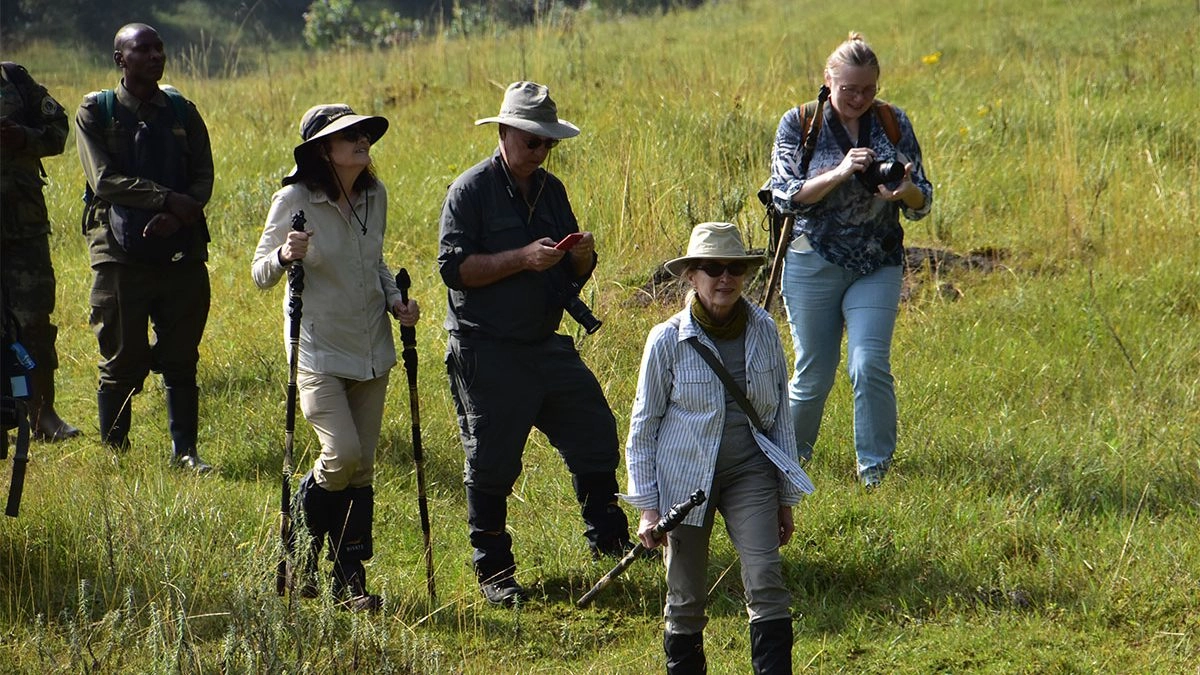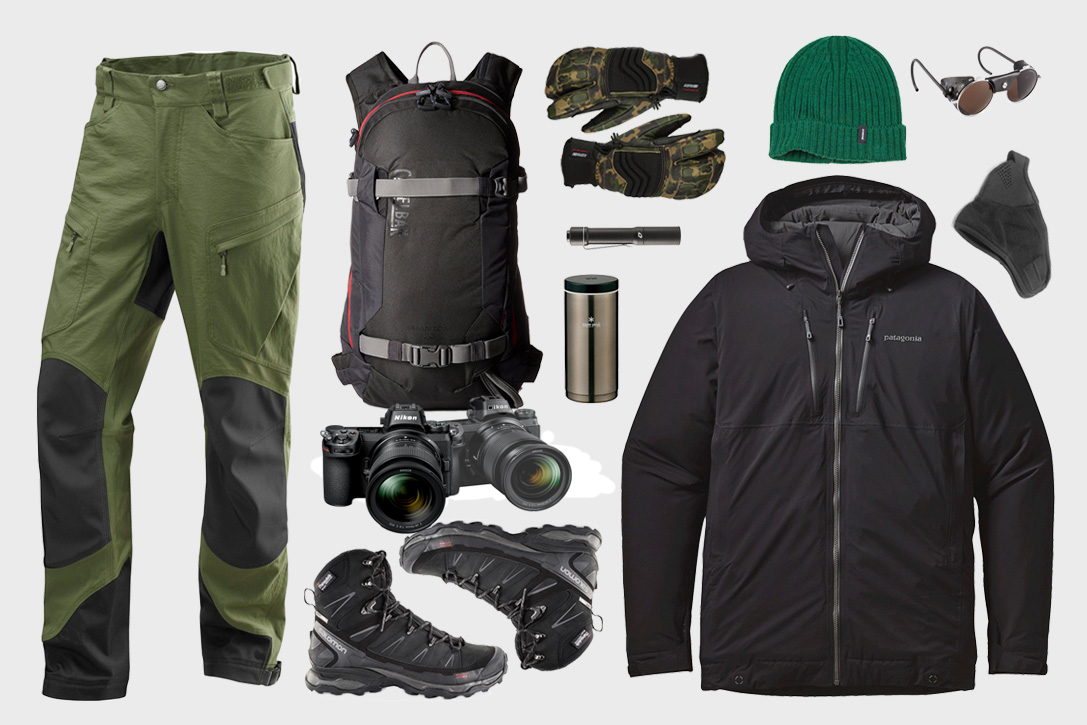What to wear for gorilla trekking in Uganda, Congo, and Rwanda
What to wear for gorilla trekking in Uganda, Congo, and Rwanda, the packing list for gorilla trekking is the primary consideration for travelers traveling Uganda, Rwanda, and Congo specifically for this activity. Individuals planning to observe the primates must contemplate their packing requirements at some stage. Gorilla tourism draws thousands of travelers to Africa year, and gorilla trekking is undoubtedly the most exhilarating wildlife experience on the continent. They differ from lowland gorillas, which are prevalent in zoos in the forests of Central and West Africa. The endangered Mountain gorillas are exclusively found in Uganda, Rwanda, and the Congo. Uganda possesses fifty percent of the global population of mountain gorillas. In Uganda, primates are observable in Bwindi Impenetrable Forest National Park and Mgahinga Gorilla National Park. Mountain gorillas in Rwanda are located in Volcanoes National Park, whereas in Congo, they inhabit Virunga National Park. The primates inhabit groups overseen by a dominant silverback, who serves as the familial leader.

Gorilla trekking is a highly sought-after and costly endeavor, although it is entirely justified. Upon securing your gorilla trip and delegating transportation, permits, and lodging to your tour operator, the subsequent consideration is optimal preparation. One may ponder the inquiry – What items should I prepare for gorilla trekking? While gorilla trekking is an exhilarating and risky pursuit, it is essential to be adequately equipped.
We have assembled a list of essential items to pack for gorilla trekking that will enhance the whole experience. It is advisable to utilize porters to assist with transporting additional bags. We recommend reading our post on gorilla trekking for the elderly to learn more about the utilization of porters. The gorilla trekking regulations are applicable to all national parks: Bwindi and Mgahinga in Uganda, Volcanoes in Rwanda, and Virunga in the Democratic Republic of Congo. The regulations also pertain to individuals participating in the gorilla habituation experience in Bwindi Impenetrable National Park. The landscapes of Mgahinga and Volcanoes National Park differ from those of Bwindi and Virunga National Park. Mgahinga and Volcanoes National Park, situated at higher elevations, are thus colder than Bwindi. A list for a general wildlife safari has been provided in the last chapters, as tourists frequently combine gorilla tours with game drives. You may find the regulations for gorilla trekking intriguing.
Gorilla Trekking Packing List
Gorilla Permits and Passport Requirements
You must provide your gorilla permit and passport at the hotel and park offices prior to commencing your walk. Valid travel paperwork and a visa are essential for every safari. Avoid traveling with an impending passport expiration. Without the necessary travel documents, entry into the nation and participation in gorilla tracking will be prohibited. Additionally, ensure that you receive the yellow fever vaccination and possess the corresponding card.
Hiking Boots
Hiking Boots: It is essential to take comfortable hiking boots for gorilla trekking in Bwindi or other national parks. High-quality hiking boots will provide superior traction on the mountainous and occasionally muddy terrain. Inferior quality boots or basic sneakers may injure your ankles. Always bear in mind that gorilla trekking entails ascending steep inclines in high-altitude regions. The paths may become muddy or slick during the rainy season.
Clothing
Clothing: When selecting garments for gorilla trekking, be certain to include waterproof pants, jackets, long-sleeved shirts, sweaters, long socks, and long trousers. Appropriate attire will safeguard you against moisture, sharp branches, solar exposure, and insects or ants. Consistently tuck your trousers into your boots to avert the intrusion of safari ants and other insects into your body. Additional attire to consider when preparing for your gorilla tour includes a pair of shorts for leisure at the lodge and pajamas for the chilly nights. Additionally, incorporate long socks to shield your feet.
A rain jacket and a sweater
This is a crucial item for packing, particularly during the rainy season. Gorillas inhabit tropical rainforests, where precipitation can occur at any time during the year. A rain jacket should be prioritized on your packing list, especially if you intend to visit during the so-called dry season. The sweater will provide warmth during chilly evenings and mornings. The Volcanoes National Park and Mgahinga are situated in high-altitude regions characterized by many volcanoes that emit cold winds and mist.
Garden gloves assist in grasping trees, branches, and other vegetation while safeguarding your hands from abrasions and bug stings. Moreover, the woodland can be treacherous and slick, particularly during the rainy season. The gloves will assist in gripping tree branches during ascent or the ground in the event of a slip. Gloves are essential in any packing list for gorilla trekking.

Toiletries are essential not just for gorilla trekking but also for ordinary safaris in several national parks. The toiletries comprise items such as toilet paper for convenience during an extended gorilla expedition. The majority of hotels do not supply toothbrushes and toothpaste. Women must bring their own sanitary pads, preferred shampoos, deodorants, hand sanitizers, razors, hair conditioners, lip balm, wipes, and lotions.
Headband and Hair Ties:
Ensure your hair is secured to prevent entanglement in branches. A hat, sunglasses, and sunscreen: These items will shield you from the sun’s heat, particularly during the dry season. These goods are essential if you intend to merge gorilla trekking with a visit to other national parks characterized by warmer climates.
Additional necessities include snacks, a packed lunch, and drinking water. Gorilla trekking is quite unpredictable. The location of the gorilla family on the day of the expedition is the determining factor. The activity may require a duration of 30 minutes to 6 hours. Trekking lengthy distances can lead to fatigue and dehydration; therefore, sufficient drinking water is necessary to prevent dehydration. Your lodge should arrange a packed lunch for you, or you may opt to bring your own energy snacks. Energy-boosting snacks are available at supermarkets and specialty stores in Rwanda and Uganda.
Walking stick:
To assist in navigating dense forest and steep terrain. The sticks are distributed complimentary following the briefing. A superior quality option is available for purchase at your accommodation or, preferable, through the park rangers.
Camera
A camera with robust battery life and ample capacity is important not just for gorilla trekking but also for various safaris across numerous national parks. A camera and batteries are required to document your most memorable experiences with the gorillas, among others, in the park.
Binoculars:
In addition to gorillas, your forest trip will reveal several bird species and other wildlife, including forest elephants, buffaloes, chimpanzees, and colobus monkeys, among others. A quality binocular guarantees clear observations of birds and primates.
Engaging Porters:
Porters predominantly originate from the Batwa village residing in the vicinity of the park. Porters assist tourists in transporting excess luggage or hefty cameras during gorilla trekking. They can assist you in traversing difficult hills and valleys. Porters can assist the elderly by utilizing specialized pouches as necessary. Porters are employed for a nominal charge. Recommend that all clients engage a porter if they are uncertain about their fitness level or if it has been established that the gorilla family exhibits high mobility.
Recommendation: (optional) Compensate your guides, porters, Rangers, and hotel personnel for their efforts in safeguarding the gorillas and ensuring your journey is comfortable. It is important to acknowledge that the majority of these porters are from impoverished origins and have family awaiting their return at home. Should you decide to provide gratuities, do so exclusively post-service and solely in acknowledgment of outstanding and professional service.

Additional items:
What to wear for gorilla trekking in Uganda, Congo, and Rwanda, Additional general items to contemplate include trip insurance, emergency contact numbers, travel maps, directories, and the final itinerary provided by your tour operator. Possessing local currency is essential for tipping guides or purchasing souvenirs in locations lacking credit card machines or ATMs. To safeguard your finances, obtain a money belt.
Most of our tour cars are equipped with first aid supplies; however, we advise tourists to bring water purification pills, analgesics, and any personal drugs for medical ailments and allergies. You may also need to pack analgesics for insect bites, medication for influenza, diarrhea, various respiratory infections, and rehydration solutions. Bandages, scissors, tweezers, and eye drops may also be essential during the journey. Always remember to bring swimwear, particularly in the dry season. The majority of hotels provide big swimming pools with views of the stunning African nature.
